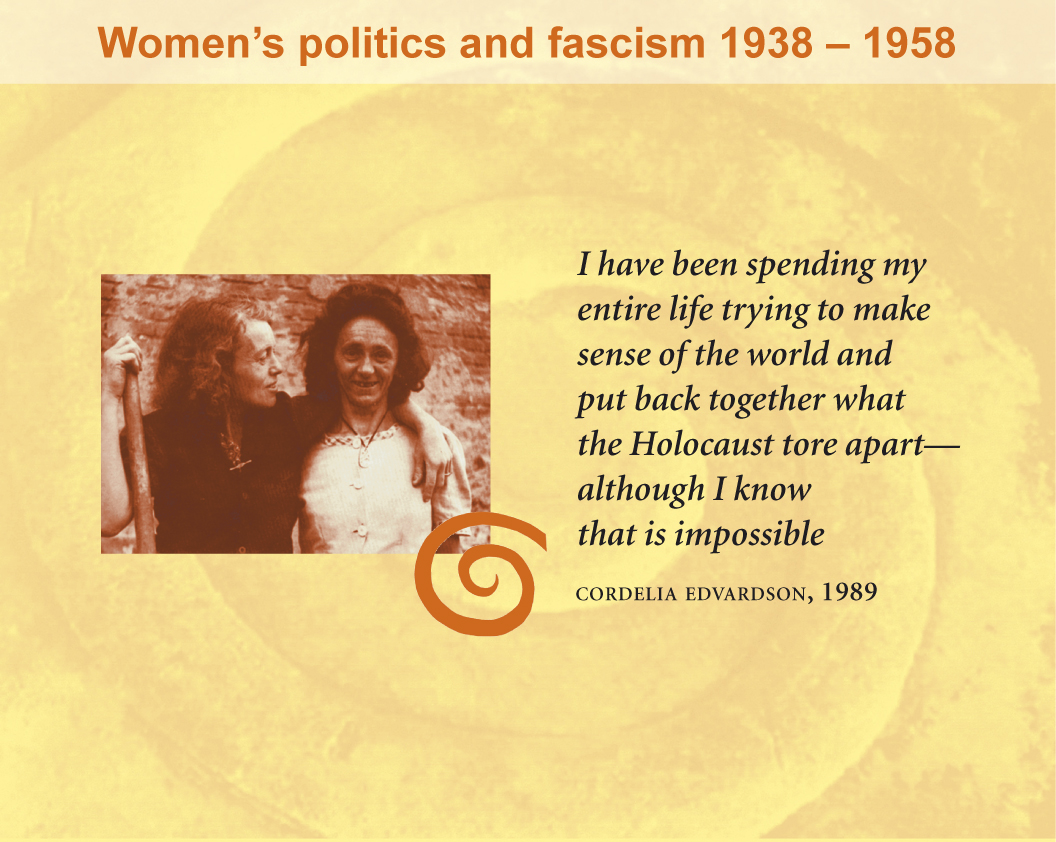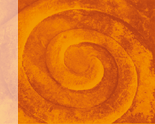 |
 |
 |
| |
|
|
| |
Seven TimeSpaces, or rooms, are linked in a spiral
movement. In this movement past, present, and future circulate. In the spiral
of time the genesis, historical impact, and changes of a matriarchal pattern
become visible. In each of the TimeSpaces particular historical and symbolical
aspects of the pattern emerge. For each TimeSpace, and in each room, this
historical occurrence is illustrated through the leifmotif of a woman's
quotation, a specially designed pictogram, and a guiding image. |
|
|

The sixth TimeSpace, and room, recounts women's
captivity in Nazi-Germany and at the same time the small opportunities they
used to act on their own conscience and elude the extinction of their own
Selves.
The symbol of the spiral marks
women's enduring will to live and survive in the shadow of a patriarchal
politics of power and destruction.
Women's
survival work made it possible to overcome fascism and to this day
matters for the development of courage and civil disobedience.
The
photograph from 1945 exemplifies the survival work of these women and at the
same time expresses their connection and hope for a better future. |
|
 |
|
See Kuhn, Annette:
Historia. Frauengeschichte in der Spirale der Zeit. [Women's history in the
spiral of time] Opladen & Farmington Hills 2010 (= Schriften aus dem Haus
der FrauenGeschichte; Bd. 4), S. 245-280 [Publications from the House of
Women's History, Vol. 4, pp. 245-280]
See Spirale der Zeit.
Frauengeschichte sichtbar machen. Hrsg. v. Annette Kuhn, Marianne Hochgeschurz,
Monika Hinterberger. Heft 6: Frauenpolitik und Faschismus. [Spiral of time.
Making women's history visible. Edited by Annette Kuhn, Marianne Hochgeschurz,
Monika Hinterberger. Issue 6: Women's politics and fascism.] Leverkusen und
Michigan (USA) 2007 |
|
 |
|
For additional publications go
 here here |
|
|




